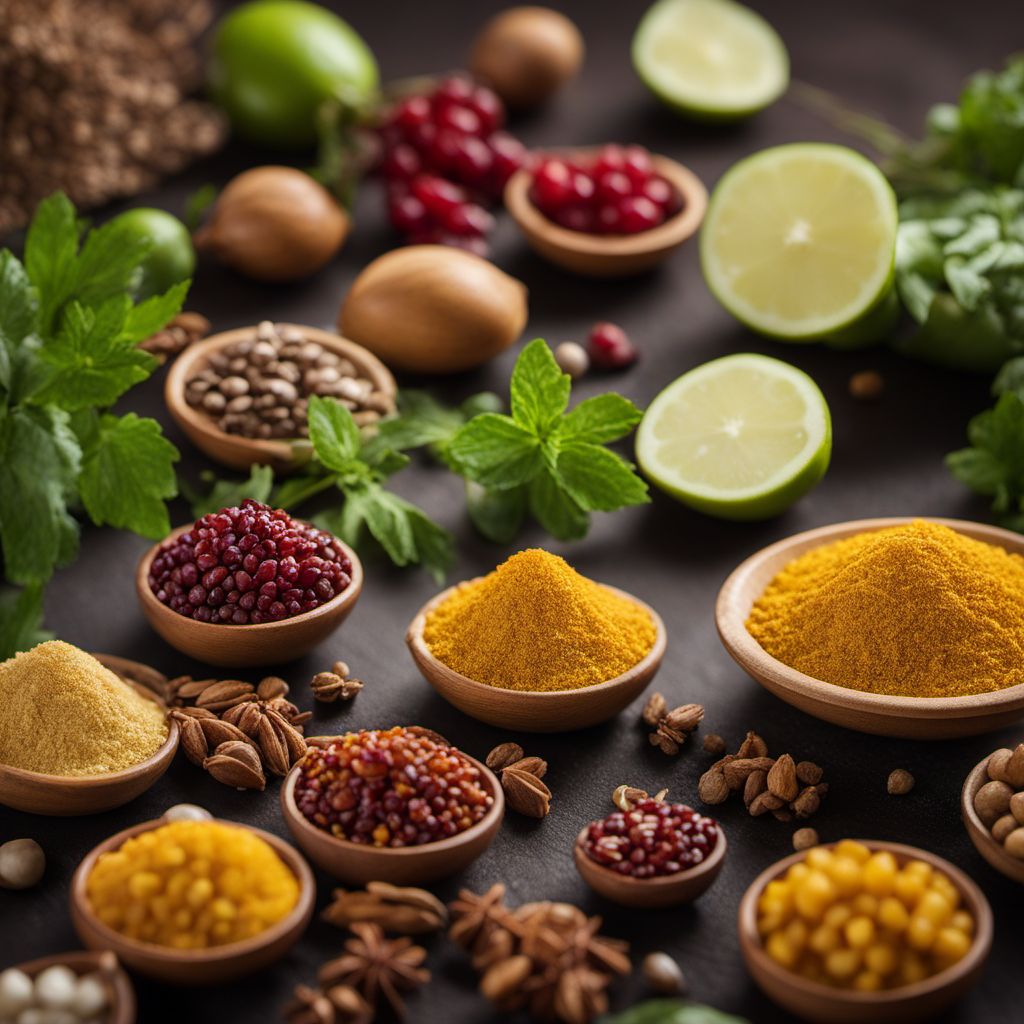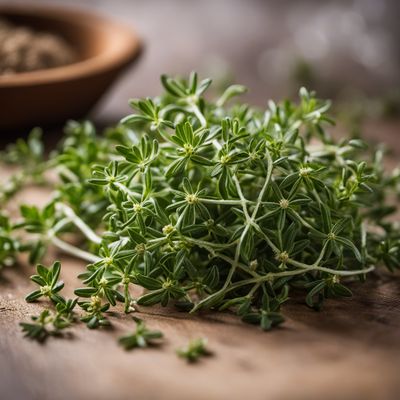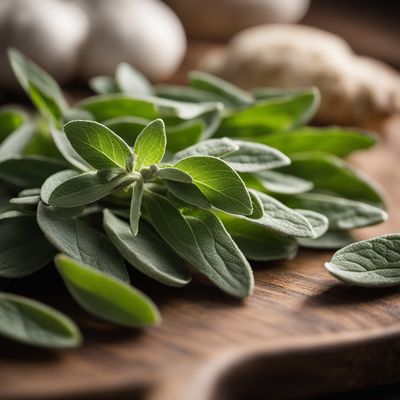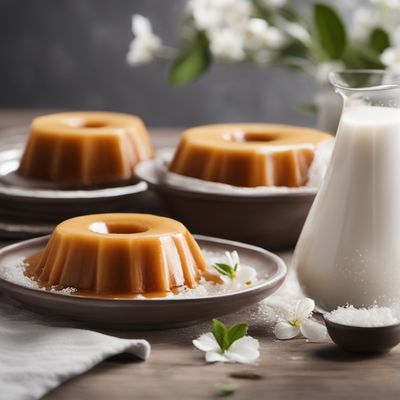
Ingredient
Aromatic herbs
Nature's Fragrant Treasures
Aromatic herbs, such as basil, rosemary, thyme, and mint, are known for their distinctive fragrances and flavors. These herbs are often used in cooking to enhance the taste and aroma of dishes, providing a fresh and vibrant element. They can be used in both fresh and dried forms, offering versatility in different culinary applications.
Origins and history
Aromatic herbs have been used in cooking for centuries, with their origins tracing back to ancient civilizations. They have been valued for their medicinal properties, culinary uses, and cultural significance. Over time, different cultures have developed unique herb combinations and flavor profiles that are now integral to their traditional cuisines.
Nutritional information
Aromatic herbs are low in calories and fat, making them a healthy addition to meals. They are also a good source of vitamins, minerals, and antioxidants, which contribute to overall well-being. Incorporating aromatic herbs into dishes can enhance their nutritional value without adding excessive calories or sodium.
Allergens
Some individuals may have allergies or sensitivities to specific aromatic herbs. Common allergens associated with herbs include mint, basil, and rosemary. It is important to be aware of any potential allergies and consult with a healthcare professional if necessary.
How to select
When selecting aromatic herbs, look for vibrant, fresh leaves that are free from wilting or discoloration. The herbs should have a strong aroma, indicating their freshness and flavor potency. If purchasing dried herbs, ensure they are stored in airtight containers and check the expiration date to ensure optimal quality.
Storage recommendations
To maintain the freshness of aromatic herbs, store them properly to prevent wilting and flavor loss. Fresh herbs can be stored in the refrigerator, wrapped in a damp paper towel and placed in a plastic bag. Dried herbs should be kept in airtight containers in a cool, dark place away from direct sunlight.
How to produce
Aromatic herbs can be easily grown in home gardens or indoor pots, making them accessible to amateur gardeners. They require well-drained soil, adequate sunlight, and regular watering. With proper care and maintenance, individuals can enjoy a steady supply of fresh aromatic herbs.
Preparation tips
Aromatic herbs can be used in various culinary applications, including soups, stews, sauces, marinades, salads, and dressings. They can be added at different stages of cooking to impart different levels of flavor intensity. Experiment with different combinations of herbs to create unique and well-balanced dishes.
Culinary uses
Aromatic herbs are widely used in cuisines around the world, including Italian, French, Mediterranean, and Asian. They are commonly used in dishes such as pesto, caprese salad, roasted meats, and herbal teas. Aromatic herbs are also popular in herbal medicine and aromatherapy practices.
Availability
Aromatic herbs are cultivated and available in many regions and countries globally. They can be found in grocery stores, farmers markets, and specialty herb shops. Some herbs may be more readily available in specific regions due to their cultural or culinary significance.
More ingredients from this category » Browse all

Celery leaves and similar-
The Green Elixir: Unleashing the Power of Celery Leaves

Laurel and similar-
Aromatic Leaves: Unveiling the World of Laurel and Similar Herbs

Tarragon and similar-
The Herb of Elegance

White ginger
The Fragrant Spice: Unveiling the Delights of White Ginger

Chives and similar-
Delicate Allium Delights

Rosemary and similar-
The Aromatic Herb

Sassafras leaves
The Aromatic Wonder: Unveiling the Secrets of Sassafras Leaves

Basils and mints
The Aromatic World of Basils and Mints

Lemon myrtle (fresh herb)
Citrus Sensation

Thyme and similar-
The Aromatic Herb: Thyme and Its Cousins

Sage and similar-
"The Herb of Wisdom: Exploring the Versatility of Sage and Similar Ingredients"

Wintergreen leaves
The Refreshing Minty Herb
Recipes using Aromatic herbs

Inuit-style Shrimp Enchiladas
Arctic Delight: Shrimp Enchiladas with a Northern Twist

Flygande Jakob - Creamy Chicken and Bacon Casserole
Heavenly Swedish Delight - Creamy Chicken and Bacon Casserole

Coconut Flan with a Twist
Aromanian Coconut Delight: Creamy and Decadent Coconut Flan

Inuit-inspired Tamales Salteños
Arctic Delight: Inuit-inspired Tamales Salteños